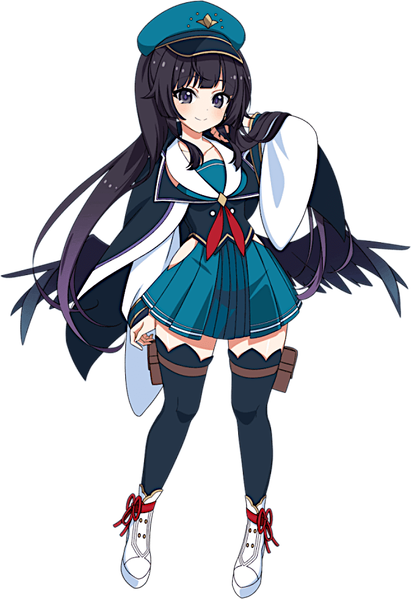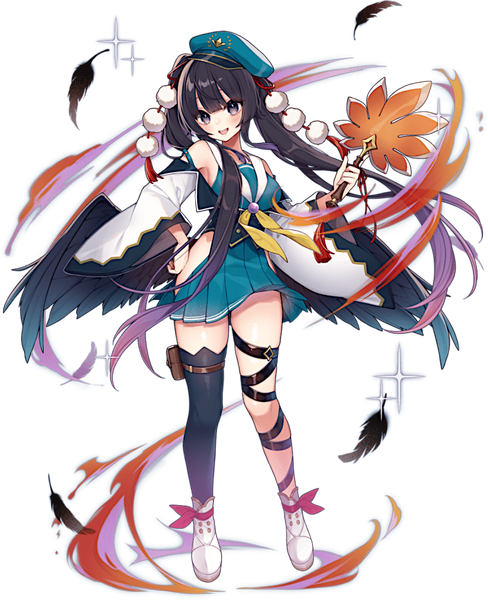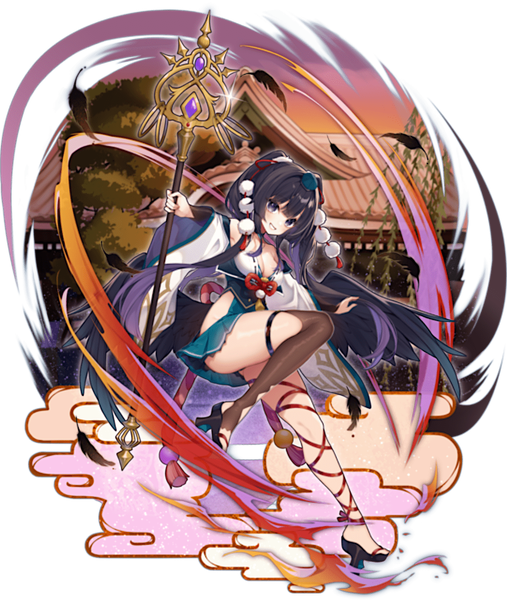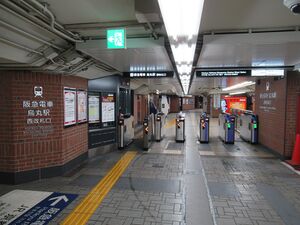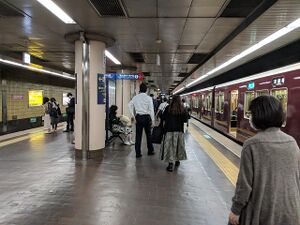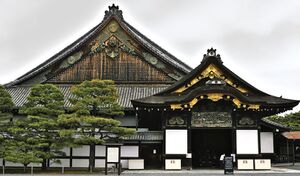Karasuma
| Karasuma | |||||
|---|---|---|---|---|---|
| Japanese Name | カラスマ | ||||
| Weapon | |||||
| Race | Beast | ||||
| Nationality | |||||
| Birthday | June 17 | ||||
| Constellation | Gemini | ||||
| Talents | Dancing, Ohajiki, Playing with marbles | ||||
| Likes | Ohajiki, Marbles and other shiny objects | ||||
| Dislikes | Spicy food | ||||
| Strengths | Very positive | ||||
| Weaknesses | Unable to tell lies or falsehoods | ||||
| Hobbies | Collecting glassware, Ohajiki, Playing with marbles | ||||
Caw caw! Karasu's Charisma, Karasuma yo! M. Nishiki Railway Army's hope! Karasuma! How's that? Have ye decided? Flashier than Miyako's, right? Then it's okay~♪
Related Layers
| Icon | Title | Release Date | Where to Obtain |
|---|---|---|---|
| [Crow's Charisma] Karasuma | 2023 January 6 | [Training Camp - Karasuma] Event Reward | |
| [Crow's Requital] Karasuma | 2023 January 16 | [Buried Gold and Crow's Treasure] Event Reward | |
| [Glitter Enthusiast] Karasuma | 2023 January 16 | [Buried Gold and Crow's Treasure] Pick Up Gacha, Premium Gacha | |
| [Wearing a Battle Suit] Karasuma | 2023 September 15 | 3rd Anniversary Limited Gacha 1 |
Skills
Trivia
- Karasuma's birthday is the opening date of Karasuma station in 1963.
- Karasuma's beast motif is the crow. Her liking for shiny objects and tengu origins hints to that. Her crow tengu design also adheres to the motif.
- Ohajiki (おはじき) is a traditional Japanese children's game similar to marbles. It is played with small coin-shaped pieces also called ohajiki. The pieces are typically made of glass or plastic, although historically the game was often played with pebbles or go stones. The game became popular as an indoor game for girls during the Edo period.
- Karasuma's weapon of choice, a tsukishou (a walking stick), is a direct reference to the Karasu-Tengu (烏天狗, crow tengu), or koppa- or konoha-tengu (木葉天狗, 木の葉天狗, foliage tengu), crow-headed ascetic practitioners who practices in the mountains in Japanese folk religion (Shinto).
- [Glitter Enthusiast] Special Skill animation is a direct homage to Ranka Lee's iconic Kira pose from Macross Frontier.
- The building in the background of [Glitter Enthusiast] is the Ninomaru Palace building of Nijou Castle, located 1km away from Karasuma station.
Counterpart
Karasuma Station (烏丸駅) is a station on the Hankyu Railway Kyoto Main Line, located in Nagatohoko-cho, Shijo-dori Karasuma Higashi-iru, Shimogyo-ku, Kyoto. The station number is HK-85. The station located directly below the Shijo-Karasuma intersection (roughly between Muromachi Dori and Higashinotoin Dori).
The station opened in 1963 when the Hankyu Kyoto Line was extended from Omiya Station to Kawaramachi Station (present-day Kyoto Kawaramachi Station). The station name differs from that of the Kyoto Municipal Subway because the Hankyu Kyoto Line runs along Shijo Dori and is abbreviated "Shijo", while the underground Karasuma Line runs along Karasuma Dori and is abbreviated "Karasuma".
The Hankyu Kyoto Line is connected to its eastern neighbour, Kyoto-Kawaramachi Station, the terminus of the Hankyu Kyoto Line, by an underground passage that runs directly under Shijo Dori, and can be reached on foot in about 10 minutes (distance between the two stations is 0.9 km). This street is not an underground mall and there are only shops and a connecting staircase to the surface within the premises of both stations. However, department stores located along Shijo Dori can be accessed via entrances and connecting staircases facing the underground passage.
Karasuma is an underground station with one or two island-type platforms. As it does not have turnouts or absolute signalling, it is classified as a stop. Therefore, it is not possible to make a slow-express connection or turnaround at this station. There are two ticket gates, one on the east and one on the west. The west ticket gate is directly below the Shijo-Karasuma intersection, and the west ticket gate is closer to the Shijo underground station. The east ticket gate, located underground on Shijo Higashinotoin Dori, is often unmanned. Wikipedia
Nijō Castle (二条城, Nijō-jō) is a flatland castle in Kyoto, Japan. The castle consists of two concentric rings (Kuruwa) of fortifications, the Ninomaru Palace, the ruins of the Honmaru Palace, various support buildings and several gardens. The surface area of the castle is 275,000 square metres (27.5 ha; 68 acres), of which 8,000 square metres (86,000 sq ft) is occupied by buildings. It is one of the seventeen Historic Monuments of Ancient Kyoto which have been designated by UNESCO as a World Heritage Site.
Nijō Castle has two concentric rings of fortifications, each consisting of a wall and a wide moat. The outer wall has three gates while the inner wall has two. In the southwest corner of the inner wall, there are foundations of a five-story keep, destroyed by a fire in 1750. The inner walls surround the Inner Ward, which contain Honmaru ("Inner Ward") Palace with its garden. Ninomaru ("Second Ward") Palace, the kitchens, guard house and several gardens are located in the Outer Ward, between the two main rings of fortifications.
The 3,300-square-meter (36,000-square-foot) Ninomaru Palace (二の丸御殿, Ninomaru Goten) consists of five connected separate buildings and is built almost entirely of Hinoki cypress. The decoration includes lavish quantities of gold leaf and elaborate wood carvings, intended to impress visitors with the power and wealth of the shōguns. The sliding doors and walls of each room are decorated with wall paintings by artists of the Kanō school. Wikipedia
Map
Gallery
- Pages using Tabber parser tag
- Pages using DynamicPageList3 parser tag
- Weapon Staff
- Beast
- Nishiki
- Gemini
- Element Blow
- Element Dark
- Element Light
- Element Fire
- Metro Train Knights
- Japan

